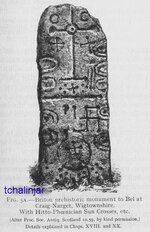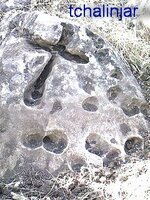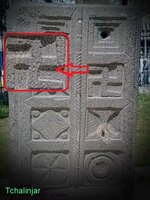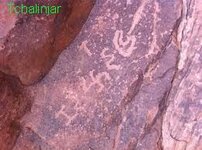tchalinjar
Greenie
- Thread starter
- #21
Hello mdog,
Signs North Africa is very old and so far not all well known and there are new codes also there are signs Numidian and there are signs Carthaginian, Roman, Byzantine and Turkish and German also
The oldest signs are Carthaginian and is shared with several signs for several peoples have a different culture
These are some pictures of the signs found in Tunisia and these same labels found in the rest of the countries of North Africa
View attachment 687390View attachment 687391View attachment 687393View attachment 687394View attachment 687395View attachment 687396View attachment 687397View attachment 687398View attachment 687399View attachment 687400View attachment 687401
View attachment 687430
=========================================================================
For Brands Such images label months and is found in almost every coastal countries and mostly be on the same figure for I be carved on rocks of the mountains interview of the Sea significantly and this version mini and is indicating places store the goods and be of such stores undergroundand a very large
View attachment 687449View attachment 687450View attachment 687451
================================================
The most famous sacred symbols which are related to commercial transactions, there turtle code 00 there is a big wild turtle be carved on a rock and is referring to the wild trade routes and there is a large marine turtle and refers to the maritime trade and we have this code in the coastal places
Signs North Africa is very old and so far not all well known and there are new codes also there are signs Numidian and there are signs Carthaginian, Roman, Byzantine and Turkish and German also
The oldest signs are Carthaginian and is shared with several signs for several peoples have a different culture
These are some pictures of the signs found in Tunisia and these same labels found in the rest of the countries of North Africa
View attachment 687390View attachment 687391View attachment 687393View attachment 687394View attachment 687395View attachment 687396View attachment 687397View attachment 687398View attachment 687399View attachment 687400View attachment 687401
View attachment 687430
=========================================================================
For Brands Such images label months and is found in almost every coastal countries and mostly be on the same figure for I be carved on rocks of the mountains interview of the Sea significantly and this version mini and is indicating places store the goods and be of such stores undergroundand a very large
View attachment 687449View attachment 687450View attachment 687451
================================================
The most famous sacred symbols which are related to commercial transactions, there turtle code 00 there is a big wild turtle be carved on a rock and is referring to the wild trade routes and there is a large marine turtle and refers to the maritime trade and we have this code in the coastal places












